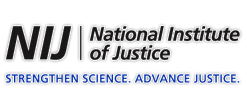Populations with barriers to the health care system include the uninsured, the underinsured, and socially disadvantaged people. Socially disadvantaged people include all people who, for reasons of age, lack of education, poverty, culture, race, language, religion, national origin, physical disability, or mental disability, may encounter barriers to entry into a coordinated system of public health services and clinical care. (Centers for Disease Control, 2018)
The contents of this glossary is funded in part through a sub-award from RTI as the lead partner for the National Institute of Justice’s Forensic Technology Center of Excellence through a Cooperative Agreement from the National Institute of Justice (2011-DN-BX-K564 and 2016-MU-BK-K110), Office of Justice Programs, U.S. Department of Justice. Neither the U.S. Department of Justice nor any of its components operate, control, are responsible for, or necessarily endorse, this website (including, without limitation, its content, technical infrastructure, and policies and any services or tools provided).




